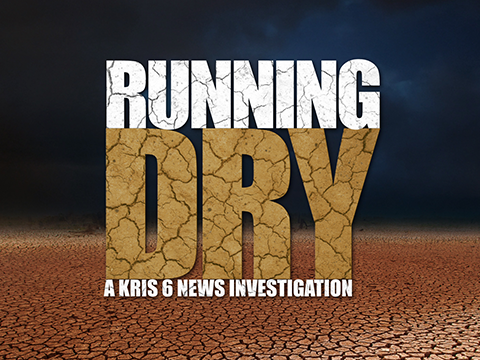CORPUS CHRISTI, Texas — We all saw the memes. A dolphin spotted at the San Antonio River Walk, the lochness monster returning to Scotland, a giant rubber duck in a body of water in London, all with the caption ‘nature is healing’.
While the memes were funny, they originated from viral photos and videos of the Venice canal with claims that it was finally clear again and wildlife was returning thanks to the drop in human interference due to the COVID-19 pandemic.
The concept was intriguing, and sparked a question for environmental researchers; with businesses and tourism shut down, and a majority of people staying home and quarantining during the peak of the pandemic, did this positively affect the environment?
A group of Texas A&M University-Corpus Christi and Harte Research Institute for Gulf of Mexico Studies water quality researchers decided to investigate the impact to local waters.
“We started to wonder how much of this is a real effect of the quarantine and how much of this is just natural variation?," said Dr. Michael Wetz in a release, HRI Chair for Coastal Ecosystem Processes.
So what did they find?
They did find lower levels of fecal indicator bacteria, which can be tied to the reduced tourism traffic as local beaches were closed. Fecal indicator bacteria comes from human waste.
Based on data collected from Texas Beach Watch, a database maintained by the Texas General Land Office, levels of fecal indicator bacteria peaked in June when tourism resumed on beaches. The researchers found the elevated levels of bacteria in Nueces County, Aransas County, Jefferson County, and Galveston County.
Dr. Wetz noted that besides tourism, fecal bacteria in the coastal waters can also be caused by poor maintenance of septic and sewage systems along the coast. He said this would be an indicator of a ‘failing infrastructure', and would need to be addressed by local governments.
Besides the data showing lower levels of fecal bacteria in the local waters during quarantine, researchers did not find any indicators that this was due to a decrease in tourism. Researchers pulled 10 years of environmental monitoring data from databases at the Mission-Aransas National Estuarine Research Reserve, and found that rainfall, temperatures, winds, and even storm variability played a bigger role in the water’s quality than the impacts of fewer people out and about.
So was nature really healing during quarantine?
Dr. Wetz and the group of TAMU-CC and HRI researchers concluded that people’s time in quarantine didn’t seem to play a big impact on the water’s quality. They did however, find that keeping long records and monitoring data is an important practice so researchers can continue to study what is happening in the local environment.


